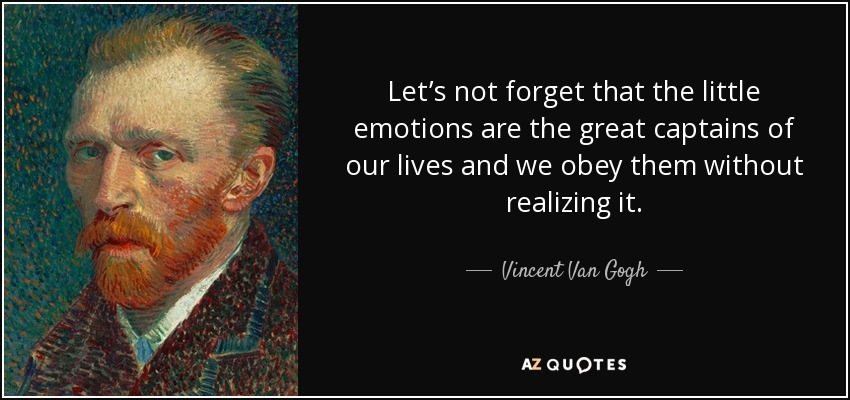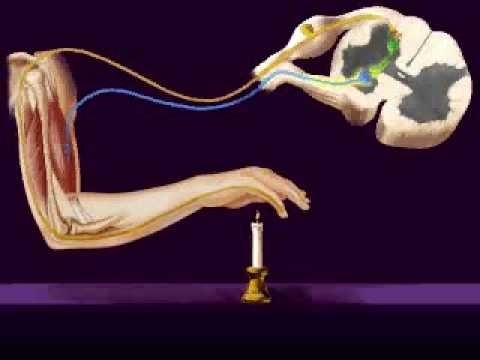Feeling Numb

beBee’s affinity has drawn me more into synchronicity than I have experienced at any other time (pun intended). This buzz comes out of the most recent experience.
I was recently reading and being inspired by Ali Anani's buzz in which he modifies the emotional equation, "Joy = Love – Fear, to read, Love = Joy + Fear." In my comment, I say that I agree with Dr. Ali’s equation. “Why else do we find parents going to their newborns to make sure they're still breathing. I am sure that we do the same from time to time with our loved ones. You have inspired me Dr. Ali to look at whether some emotions, like fear, are always present, asking the question, can we feel X without feeling fear?”
As I begin to explore this concept, I see Ian Weinberg's buzz posted, and read, “…we are making great strides in understanding the core dynamics underpinning emotion.”
Now, I can go ahead and write my buzz.
I looked at how I communicate the framework in which I provide my services. I write: We are sensory beings, we are conscious beings and we are creative beings. Reading it with my new emotionally inspired eyes, I asked myself, did I leave out an important branch of what it means to be human? Are we not emotional beings? After much thought, I decided that I did not leave anything out. Our emotions are manifestations of who we are as sensory, conscious and creative beings.
The art of balancing it all.
“The artist is a receptacle for emotions that come from all over the place: from the sky, from the earth, from a scrap of paper, from a passing shape, from a spider's web.” - Pablo Picasso
We struggle with “feeling” our emotions; too much and we’re flooded, too little and we’re numb. We are advised to feel empathy, be emotionally intelligent, have a wise heart.
How much, or how little, we feel starts with our sensory system. We receive information in an internal/external loop that runs through our Central Nervous System (CNS). The emotions we start off with are our basic survival ones; what is referred to as somatic. We feel hungry, we feel tired, we feel uncomfortable, we feel the need to bond. Then there is the emotion of fear as experienced by fight, flight or freeze. All of these are experienced as bodily sensations. It is only when we start forming experiences, associations and attaching meanings, do we then restructure our CNS to fit or respond to those new meanings.
Some emotions are deemed good, some bad, some are repressed, some cannot be forgotten.
In his article, 7 Lessons Learned on Dealing with Bad Emotions, M. Farouk Radwan writes from the start of the discussion at number one:
“Lesson #1 – Bad feelings are just signals
Lots of people never manage to understand the fact that bad feelings are signals sent by their minds in order to motivate them to do something. Just like hunger is a signal that shows that you need food emotions are signals that show you that you are in need of something.”
We start off with the body receiving the signal of hunger for food, and develop to the mind receiving the signal of an emotion for a need to be satisfied. First comes the need to bond, later comes the need to love. At the basis of it all is our primary emotion of fear. Out of this emotion, out of the experiences based on this emotion, we experience our other emotions. We cannot feel any emotion in the absence of fear; signals being communicated through our CNS loop.
When things are off balance.
We are innately driven to achieve homeostasis; find a balance. But sometimes, the mechanism itself, presents a challenge.
The source of feeling physical and emotional pain is the same.

Physical pain:
“Congenital insensitivity to pain (CIP), also known as congenital analgesia, is one or more rare conditions in which a person cannot feel (and has never felt) physical pain. It is an extremely dangerous condition.” - wikipedia
We place our hand on a hot stove, do not receive the signal to remove our hand and so we burn ourselves. This condition and the risk it presents seems obvious to us; it makes sense.
Image credit: Youtube
Emotional pain:
Because there is more in between the emotional stimulus and response pathway compared to that of the physical, the definition of a condition that influences our ability to feel emotional pain is less straight forward than that of the physical.
“Alexithymia is a personality construct characterized by the subclinical inability to identify and describe emotions in the self. The core characteristics of alexithymia are marked dysfunction in emotional awareness, social attachment, and interpersonal relating. Furthermore, alexithymics have difficulty in distinguishing and appreciating the emotions of others, which is thought to lead to unempathic and ineffective emotional responding. Alexithymia is prevalent in approximately 10% of the general population and is known to be comorbid with a number of psychiatric conditions. The term alexithymia was coined by psychotherapist Peter Sifneos in 1973. The word comes from Greek literally meaning "no words for mood".” - wikipedia
I was struck by this description, "no words for mood". If someone cannot find the words, or does not have access to the words, to communicate what he or she is feeling emotionally, does this mean that the individual is not able to feel emotions?
Deborah Serani writes in her article (Interestingly titled with a reference to one of the senses. Why blindness, why not deafness? It's all about communication.), The Emotional Blindness of Alexithymia:
"Sometimes I work with children and adults who can't put words to their feelings and thoughts. It's not that they don't want to - it's more that they don't know how.
Here are a few examples those with alexithymia experience:
Difficulty identifying different types of feelings
Limited understanding of what causes feelings
Difficulty expressing feelings
Difficulty recognizing facial cues in others
Limited or rigid imagination
Constricted style of thinking
Hypersensitive to physical sensations
Detached or tentative connection to others
Crucial to her discussion is when she writes about treatments for Alexithymia:
[Realize that] the missed cues, flat reactions or lack of emotional recognition have real neurobiological and psychological origins. Realizing that your loved one may not speak, hear or sense the same emotional language as you can help when conflicts or misunderstandings take place.
If you live with alexithymia, the goal is to strengthen your ability to identify and understand feelings. Teaching yourself about the subjective experiences of others will be important too."
She recommends journaling, reading novels, and using the expressive arts.

In spite of this condition, feeling or not feeling emotional pain, is often the norm. All feelings, whether normal or pathological, are ultimately somatic, bodily based. Culturally, the physical is more readily accepted while the emotional is perceived or judged to be the “fault” of the individual. This message is then internalized and becomes part of our CNS loop. Ian Weinberg writes:
“Studies have shown that the amygdala and the nucleus accumbens mutually oppose each other in terms of function. Thus when anxiety or anger prevail, the nucleus accumbens is suppressed. Conversely when the nucleus accumbens is activated and gratification and purposeful motivation are maintained, the anxiety and anger of the amygdala is diminished. I would further propose that most of the other emotions are derived from the interplay of these two defined emotional centres. The activation of the nucleus accumbens and thereby the enhancement of gratification and purposeful motivation is vital, because lack of gratification and purpose may be the core component of depression. I have defined this state as ‘hopeless-helpless’.”
Ian Weinberg offers one tool to help reframe those messages: “Fortunately all is not lost. For twenty five years I have been researching this complicated dynamic and developing a comprehensive program designed to empower the user to transcend this compromised state and to attain and sustain a productive and gratifying space. The result is neuromodulation – a cognitive application engaging directly with the underpinning neurophysiology.”
When fear is no longer the communicator that facilitates our ability to experience emotions in a way that enables us to be safe and thrive, being conscious of what is taking place and finding the means to make the necessary changes is crucial to our ability to function, personally and professionally.
Business is a function, “the practice of making one's living by engaging in commerce.” We study business, analyze, plan, design, build, implement, assess, improve, enter into, negotiate, all words describing functions and behaviors related to business.
“There’s no room for emotions in business”, is a phrase that has often been heard. But things are changing. In her article, Emotions and Business, Jen Grisanti asks: "Could learning to use our emotions actually help us to succeed versus being something that gets in our way? It’s a new time."
It may be "a new time" but the emotions are the same old ones and so the learning has to take into consideration our human nature in its entirety. It’s not realistic to look at an emotion and talk about how we can use it to improve our business. It’s not even functional. It makes more sense to acknowledge emotions as a form of communication and try to learn that language; what is my emotion telling me? In health care, we talk about listening to our bodies. Maybe in business “it’s time” to listen to our emotions.
“Genius is the ability to renew one’s emotions in daily experience.” — Paul Cezanne
Image credit of above painting: Sorrowing Old Man is an oil painting by Vincent van Gogh that he made in 1890 in Saint-Rémy de Provence. - wikipedia
"""Articles from Sara Jacobovici
View blog
Even when you say, "The sky's the limit.", you have set a boundary. That's not necessarily a bad thi ...

Image credit: steveoatesblog - WordPress.com · With Q&A@beBee, I ask some of the most interesting pe ...

My mother, Ida Jacobovici (of blessed memory), passed away on August 17th at the age of 97. She was ...
You may be interested in these jobs
-

Online VHDL tutor
Found in: beBee S2 IL - 5 days ago
TeacherOn Ashkelon, Israel Part timeVhdl teacher · Level: Grade 4 · Gender Preference: None · Meeting options: · Available online - via skype etc. ...
-

Digital Marketing Manager
Found in: beBee S2 IL - 2 days ago
Zengo Tel Aviv, Israel Full timeZengo is looking to hire a Digital Marketing Manager to join their team. This is a full-time position that is based in Tel Aviv. ...
-

Senior Front-End Developer
Found in: beBee S2 IL - 2 days ago
Pontera Herzliya, Israel Full timePontera is seeking a talented Senior Front-End Developer to join our growing team.You will play a crucial role in designing and developing the user interface of our main growing product used by most of our customers.You will work closely with our designers and product team to sha ...
Comments
Sara Jacobovici
7 years ago #17
Great added value to the discussion Deb\ud83d\udc1d Lange's buzz so closely related to your comment, I am adding the link https://www.bebee.com/producer/@ian-weinberg/humbled.
Sara Jacobovici
7 years ago #16
Well said @Tausif Mundrawala. I appreciate you bringing up the issue of stigma. An important reminder.
Sara Jacobovici
7 years ago #15
Always appreciate when you contribute to the discussion \ud83d\udc1d Fatima Williams. I am intrigued by your definition of emotional freedom: "A mind not affected by emotions but enriched by emotions." I am sure there is enough thought there for a separate buzz. I would love to hear more.
Sara Jacobovici
7 years ago #14
Looks like we're talking at cross purposes so I'm at the point where I respectfully ask for us to agree to disagree. Thanks for your contribution to the discussion.
Sara Jacobovici
7 years ago #13
I'm adding this one to my Deb \ud83d\udc1d Helfrich quotes: "Every emotion has a purpose and pretending certain ones don't exist, or worse, never occur, is taking away much of the true processing power of our bodymind complex."
Sara Jacobovici
7 years ago #12
Thanks for dropping by @Brian McKenzie. I'd like to respond with a couple of points: 1. There are other objects beside the ones you list, which were created and are being used by emotional humans, such as: musical instruments, MRIs, solar cells or panels, telescopes, microscopes, and so on. 2. There seems to be a contradiction in your comment, you don't "care" for emotions, you don't "care" for the feels. Care carries a lot emotion.
Sara Jacobovici
7 years ago #11
Thank you debasish majumder for contributing your insightful perspective.
Sara Jacobovici
7 years ago #10
Sara Jacobovici
7 years ago #9
Sara Jacobovici
7 years ago #8
Agreed Savvy Raj. Beautifully written.
Sara Jacobovici
7 years ago #7
Thanks for creating the place Javier \ud83d\udc1d beBee.
Sara Jacobovici
7 years ago #6
Sara Jacobovici
7 years ago #5
Thank you Paul Walters. Appreciate your support.
Sara Jacobovici
7 years ago #4
Relieved and grateful that you are happy with the buzz that mentions you and your work Ian Weinberg.
Sara Jacobovici
7 years ago #3
Grateful to have you share your thoughts Ali Anani. I always learn from your perspective and the questions you ask. Thank you, too, for your ongoing support. Much appreciated.
Sara Jacobovici
7 years ago #2
Well said Pascal Derrien. Thank you.
Sara Jacobovici
7 years ago #1